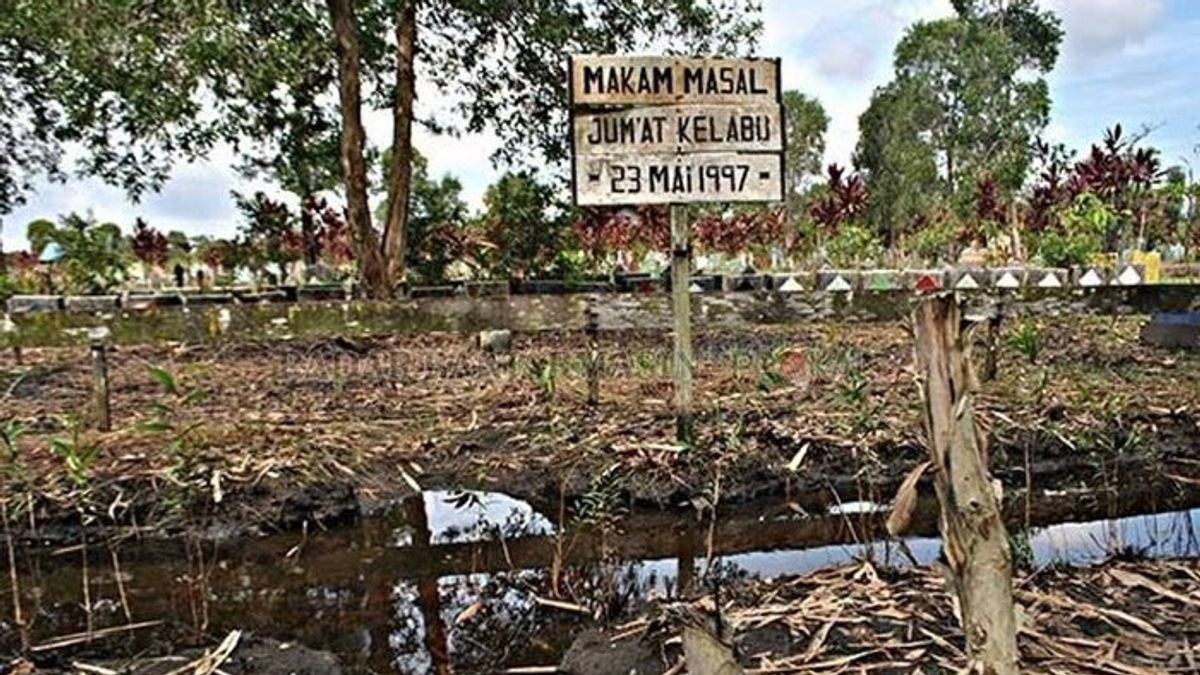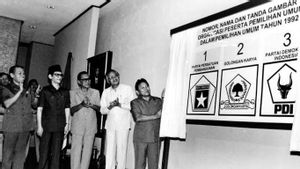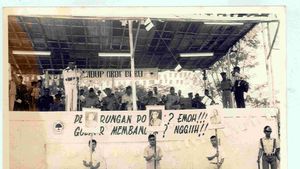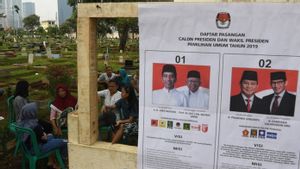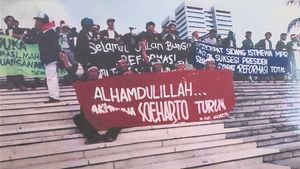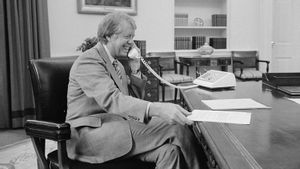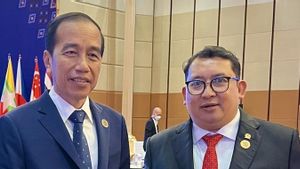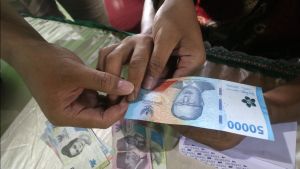JAKARTA The riots in the campaign ahead of the elections in Indonesia are common. However, the chaos that occurred in several political campaigns of the 1997 election contestants became extraordinary, because it was full of blood and claimed many lives.
The 1997 election which was held on May 29 is the last days of President Soeharto's rule. The election was the sixth to be held, under the New Order regime after the previous 1971, 1977, 1982, 1987, and 1992. In the 1997 Election the New Order through their political machine, Golkar, tried to rise after losing a lot of votes in 1992.
The 1997 election still chose legislative members. Followed by three contestants: Golkar, United Development Party (PPP), and the Indonesian Democratic Party (PDI) with a total of 112,991,150 voters.
The final result shows that Golkar won a landslide victory with 84,187,907 votes or 74.51 percent. PPP is in second place with a total of 25,350,028 or 22.43 percent of the vote. PDI as has already been in the order of distended with only 3,463,225 votes, or 3.06 percent.
One bad note ahead of the 1997 election was the riots on Saturday 27 July 1996, or known as the Kudeta 27 July (Kudatuli). This incident was in the form of an attack by Indonesian government forces against the PDI head office on Jl Diponegoro, Central Jakarta.
The attack was motivated by the engineering of the PDI Congress in Medan, which was masterminded by the government led by President Soeharto, to overthrow Megawati Soekarnoputri who was elected as the General Chair of the PDI Party. The New Order wants to return to position Soerjadi as chairman of the party bearing the bull head in the fifth hand.
The practice of democracy being developed should be to prevent political violence in society. Institutional democracy, such as the implementation of elections, is idealized to prevent political violence.
Experience in developed countries in Europe or the United States, for example, if democracy is implemented, domestic political violence is very rare. But in a third world country, including Indonesia, the opposite happened.
Political violence has actually become a ghost for the implementation of democracy. The difficulty of the third world government to practice democracy. Structural obstacles from the ruling regime actually made political violence easy. In 1997 Indonesia had tried to practice democracy for 52 years, but it had not been successfully acted properly.
Since independence, Indonesia has practiced seven times of general voters. Six of the seven elections were held under the New Order government. However, we witness that democracy in Indonesia is still far from what is expected. In fact, it is feared that currently democracy in Indonesia is experiencing a paradox; on the one hand the election was held, on the other hand, it actually enlivened the emergence of political violence in society," wrote the Trijono Symbol, lecturer at the Department of Sociology at the Faculty of Political Social Sciences, Gadjah Mada University, Yogyakarta in a research report on the Paradox of Democracy in Indonesia: Riots during the 1997 Campaign Period.
During the 30-day 1997 election campaign, the emblem recorded 28 cases of political violence. Even more sad, as many as hundreds of victims died in riots during the 1997 election campaign.
The symbol concluded that there was an error in practicing democracy in Indonesia. The hope to make democracy a tool to prevent political violence does not occur.
Of the 28 riots that occurred during the 1997 election campaign period, three events were recorded which resulted in heavy losses. First, there was riots that occurred in Pekalongan, Central Java. The riots occurred repeatedly on a small scale, with the two largest on March 24 and 26.
The trigger was Golkar's intention to 'unify' Pekalongan, known as the PPP basis. This riot actually occurred before the official campaign period, but because the political temperature was already heating up, it was possible for missing' campaigns to occur.
The March 24 conflict was triggered by the ban on the installation of PPP flag attributes by the Pekalongan Regional Government apparatus because it was not during the campaign period. But they actually let the Golkar flag continue to fly, arguing that officials would come.
Riots grew on March 26 when Golkar brought in two figures, Rhoma Irama and Zainuddin MZ for da'wah activities. The mob blocked the highway to block the two religious figures carried by Golkar. The riots did not cause any casualties, but buildings and houses were destroyed, 7 people were injured and 17 others were detained.
The riots in Jakarta on May 18, 1997 also involved the masses of Golkar and PPP. This is the biggest riot in Jakarta during the 1997 election campaign, because it happened all over the capital. The trigger was trivial, because the masses did not follow the invitation for a two-finger reference from the Golkar crowd who was in a convoy.
Open clashes are inevitable. Government offices, police stations, banks, and shops were burned. Many of the victims were injured as a result of these open clashes, and killed one person.
The biggest riot occurred in Banjarmasin, South Kalimantan on Friday, May 23, 1997. That date was the last day of the campaign period, when the procession of the Golkar crowd passed the Annur Mosque. The convoy was carried out using a motorcycle with a loud Brong exhaust, even though at that time they were praying Friday.
After Friday prayers, the masses gathered to avenge the treatment of Golkar supporters. Kompas' report on May 31, 1997, entitled Campaign Holds Lives and Floatings, said the crowd involved in the attack on Golkar reached 50 thousand people.
SEE ALSO:
Inevitably many buildings were destroyed, starting from houses, offices, shopping centers, cinema buildings, hotels, restaurants, to schools. Many motorized vehicles were destroyed. The thing that makes it sad is that 123 people died and 113 were lightly and seriously injured.
According to US professor of political science, Ronald Joseph Rummel in the writings of Democracy, Power, Genocide, and Mass Murder, Journal of Conflict Resolution, the source of all political unrest in a democratic country is: the inability of democratic institutions to work effectively to overcome social conflicts in society.
Just like Indonesia's condition with the government at that time, which was semirepressive. After decades of political rights, people castrated, they immediately exploded when the opportunity was slightly opened.
The English, Chinese, Japanese, Arabic, and French versions are automatically generated by the AI. So there may still be inaccuracies in translating, please always see Indonesian as our main language. (system supported by DigitalSiber.id)
